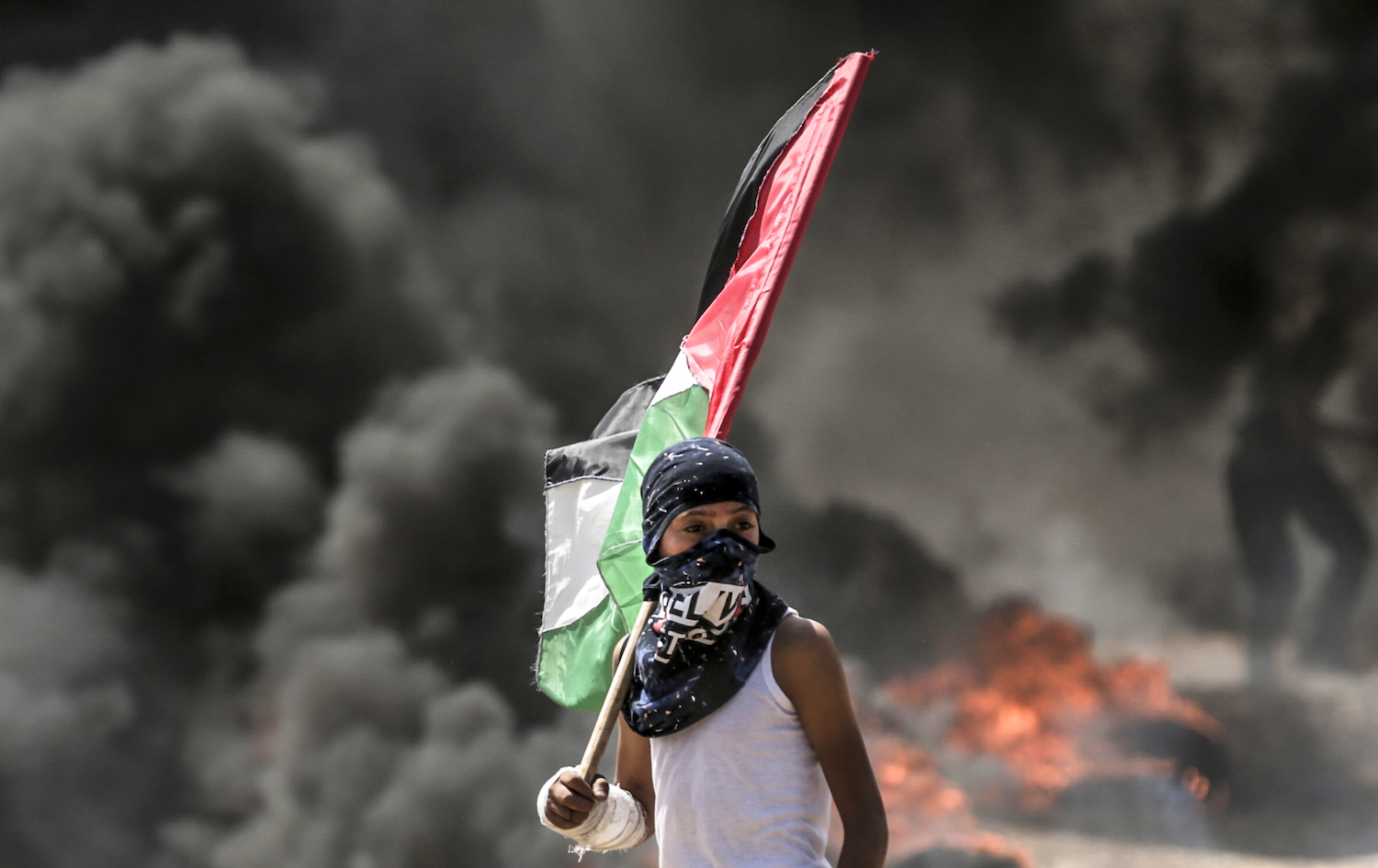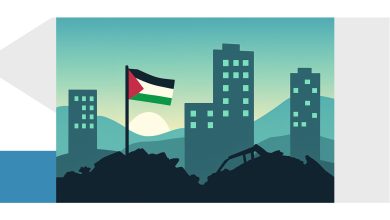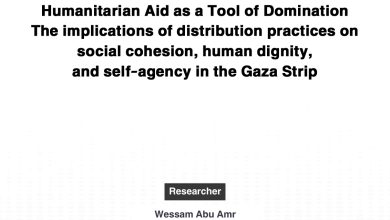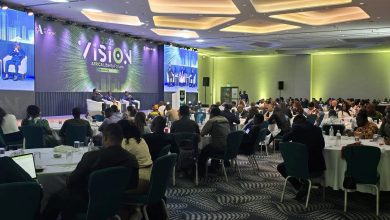Gazans Are Protesting Their Economy, Not Israel’s Existence

By: Omar Shaban
![]() In recent months, tens of thousands of Palestinians have marched toward the Gaza-Israel border in what has become known as the “Great March of Return.” On May 14 alone, more than 60 people were killed and over 2,700 were injured by Israeli bullets and tear gas. While the ongoing mass protest succeeded in bringing Gaza’s humanitarian crisis to the world’s attention, it also reminded the Arab nations, the European Union, the United States, and Israel that Gaza may have been perceived as a stable conflict, but is in fact far from stable. The call by some activists to march to the Gaza border with Israel was seen by Hamas and other Palestinian factions as a golden opportunity to exit from the numerous crises facing them and to shift the people’s anger toward the Israeli occupation.
In recent months, tens of thousands of Palestinians have marched toward the Gaza-Israel border in what has become known as the “Great March of Return.” On May 14 alone, more than 60 people were killed and over 2,700 were injured by Israeli bullets and tear gas. While the ongoing mass protest succeeded in bringing Gaza’s humanitarian crisis to the world’s attention, it also reminded the Arab nations, the European Union, the United States, and Israel that Gaza may have been perceived as a stable conflict, but is in fact far from stable. The call by some activists to march to the Gaza border with Israel was seen by Hamas and other Palestinian factions as a golden opportunity to exit from the numerous crises facing them and to shift the people’s anger toward the Israeli occupation.
The most important motive for the marches was anger at the terrible conditions in which Gazans live. Gaza has been besieged by Israel for more than 11 years, and its people are suffering from a shortage of electricity, lack of water, and the inability to travel. They are also victims of the political failures of both the Palestinian Authority and Hamas; the PA-led peace process and the armed resistance spearheaded by Hamas have done nothing to improve the lives of Gaza’s residents, 65 percent of whom are under 30 and have never been outside of Gaza. A United Nations report that was published in 2012 projected that Gaza will not be livable by 2020.
The tiny Gaza Strip continues to receive global media coverage far out of proportion to its size. This isn’t due to its wealth or natural resources. It’s because of its location and complex governance. Gaza sits on Israel’s frontier, borders the Sinai Peninsula where jihadis have been battling the Egyptian Army, and is nominally part of the Palestinian Authority while being governed by Hamas, which is considered a terrorist organization by Israel, the United States, and the EU.
After Hamas’s election victory in 2006, bloody clashes erupted between Hamas forces and the PA, which ended in June 2007 with Hamas taking over Gaza by force, confining the PA to the West Bank. Despite its defeat, the PA has continued to pay its 50,000 Gaza-based employees to mostly sit at home so that they do not work under Hamas authority. The PA is also paying the bill for Gaza’s electricity supply (that is bought from Israel) as well as $100 monthly allowances to some 100,000 so-called hardship cases, primarily the very poor, the handicapped, and vulnerable women.
Not long after Hamas took over Gaza in June 2007, the Israeli government branded Gaza a “hostile entity.” Israel put heavy restrictions on the flow of goods into and out of Gaza. Hamas responded by digging dozens of tunnels underneath the border with Egypt. The tunnels trade has become the main lifeline for Gaza’s population; it also became the main source of revenue for the Hamas-led government. It is estimated that Hamas has collected more than $500 million in taxes from tunnel-based trade. From 2007 until today, Hamas has recruited some 40,000 employees who replaced the PA public servants who continued to receive their PA paychecks while sitting at home.
Gaza’s residents were then subjected to three major wars between Hamas and Israel in 2008, 2012, and 2014. In 2014, 11,000 houses were destroyed, and 6,800 were severely damaged in addition to other major infrastructure. The reconstruction of Gaza became another area of conflict and competition between the PA leaders in Ramallah — who insisted that all foreign donations must come through its channels — and Hamas, which wants to receive its share of reconstruction funding.
Economic crisis has also played a major role in worsening living conditions and public anger. Hamas encountered a severe financial crisis in 2013 when Egypt’s then-President Mohamed Morsi, who sympathized with Hamas, was ousted from power. The new president, Abdel Fattah al-Sisi, launched a demolition campaign against the tunnels between Gaza and Egypt, which affected Hamas’s primary source of revenue. As a result, Hamas was unable to pay the salaries of its 40,000 personnel and other operational costs. Egypt now closes the Rafah border crossing for most of the year despite the fact that it is the only way to exit Gaza for the majority of Gaza’s population. The people are trapped.
Then, in March 2017, the PA in Ramallah started to take financial measures against Gaza with the goal of putting pressure on Hamas. These measures ranged from 30 to 50 percent salary reductions for the Gaza-based PA employees, ceasing to pay the salaries of others, reducing the bill it pays for the electricity supply to Gaza, and delaying monthly welfare payments for hardship cases in Gaza. These measures aimed to decrease the taxes that Hamas collects and increase the people’s anger toward Hamas’s leadership. In short, the PA wanted Gazans to believe that Hamas was the reason for their misery.
After several rounds of talks on reconciliation between Hamas and the PA between 2011 and 2017, the latest agreement, was mediated by Egypt and signed on Oct. 12, 2017. The agreement stipulated that Hamas would give up governance of Gaza completely to the PA and that the latter would pay the salaries of 40,000 Hamas employees. A few months after the agreement was signed, the PA government in Ramallah claimed that Hamas has not handed over the entire Gaza Strip to the PA security forces and that Hamas was continuing to collect taxes, which were agreed upon to be collected by the PA government. Subsequently, the PA government refused to integrate the 40,000 Hamas-hired employees onto its payroll or pay their salaries (which amounted to about $30 million per month.)
The Israeli siege, the Egyptian border closure, and the PA’s financial measures against Gaza have succeeded in isolating Hamas politically and have put the group under severe financial strain. Hamas leaders, meanwhile, contend that they have made remarkable concessions to all stakeholders: to the PA by giving up the governance of Gaza, to Israel by stopping the launching of rockets into southern Israel, and to Egypt by helping Cairo fight Islamist terrorist groups in Sinai, all for nothing in return. The other parties insist that Hamas must give up everything before it can get something in return.
As a result, Gaza’s residents have become hostages to the contradictory policies of various stakeholders.
Hamas seeks to transfer the economic responsibility for the Gaza Strip to the PA while it maintains a military capacity underground. Hamas possesses a significant arsenal within Gaza; it also controls some of the remaining tunnels underneath the border with Sinai. Hamas wants to retain this capacity to protect its position and to use it as a bargaining card with the PA and Israel. This is an imitation of the Lebanese militant group Hezbollah’s approach, whereby the state pays for social services but doesn’t control many of the weapons on its territory. Hezbollah has effectively become a state within a state.
The PA rejects this model and wants Hamas to give up governance, weapons, and control of the border. The PA’s interest is to maintain its influence within the Gaza Strip and over its population, which enables the PA to preserve its claim that it is the legitimate representative of all Palestinian people.
Israel’s position toward Hamas has shifted from an insistence that it is a terrorist organization that must be violently dismantled to the perspective that it is a hostile entity that must be deterred in order to preserve the status quo, while keeping Palestinians politically divided and without bringing about the total collapse of the regime in Gaza.
Finally, Egypt doesn’t recognize Hamas as a legitimate party, but it desperately needs Hamas’s help to secure its border and to provide assistance in its campaigns against the Salafi terrorist groups in the Sinai Peninsula.
Gaza has become a place where none of the influential stakeholders want to invest too deeply, yet refuse to completely disconnect. Meanwhile, the 2 million people living in Gaza continue to suffer.




